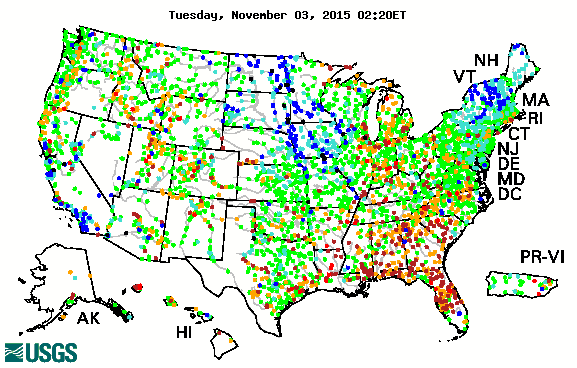U.S. Streamflow Level Comparison

Rain and snowmelt are always filling the streams and rivers of the world. While you may see current weather conditions in the news, there are also thousands of monitors across the world gathering data on how much freshwater is actually flowing after it hits the ground.
As with most data, the true value of the measurements is discovered when it is compared to other collected data. This graphic examines the current streamflow and compares it to historical data. The colored dots represent percentages. Red dots show area where the streamflow is currently at very low levels compared to previous years. As you move to the bluer dots, the water levels are higher. The gaging stations that gather data have at least 30 years worth of data that they use for comparison.
As we hit the winter months in the northern hemisphere, some of the dots will disappear because the streams and rivers have frozen over. Never forget that even though water is constantly moving through the hydrosphere, there are times where it is frozen in ice, snow, or glaciers.
This image displays the real-time streamflow in percentages. The real-time data is compared to historical data. The image is updated once a day. You may view the page sponsored by the United States Geological Survey (USGS) at http://water.usgs.gov/waterwatch/index.html.
Link: Water Resources of the United States (USGS)




